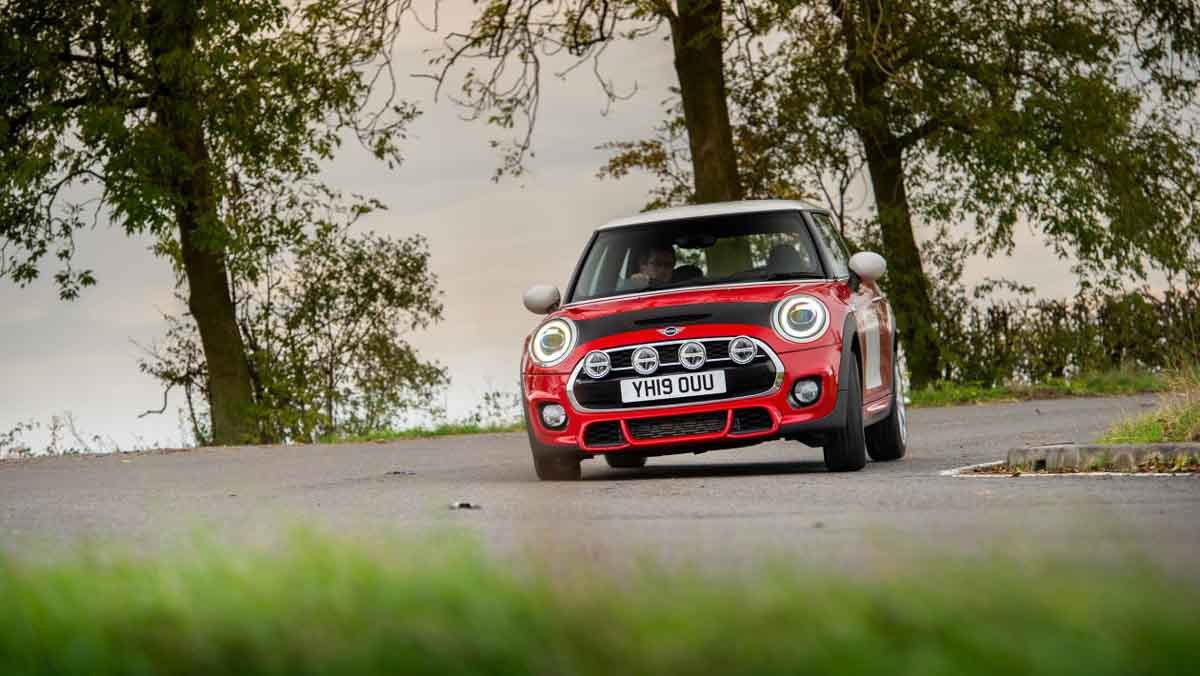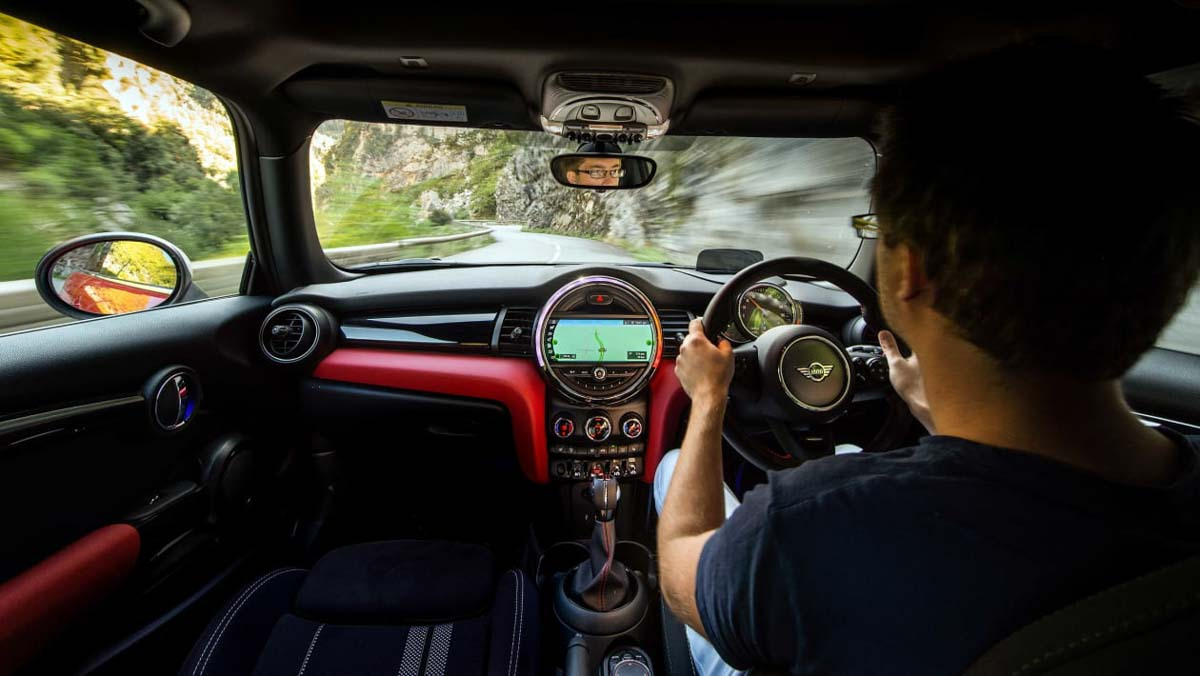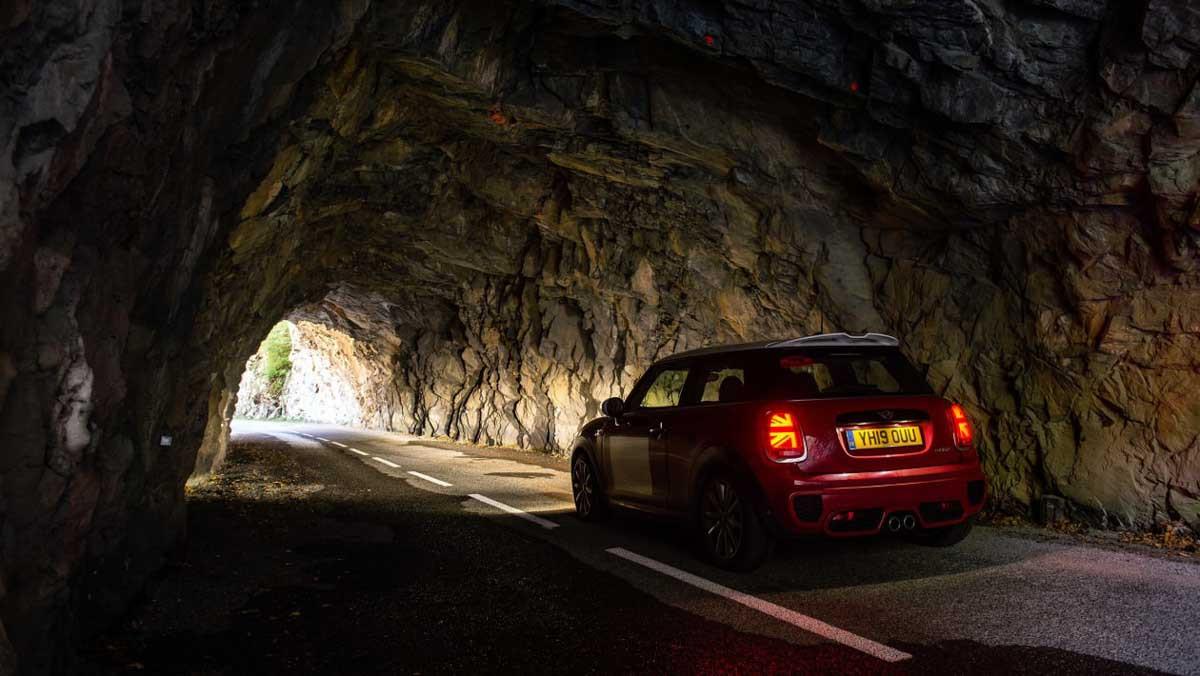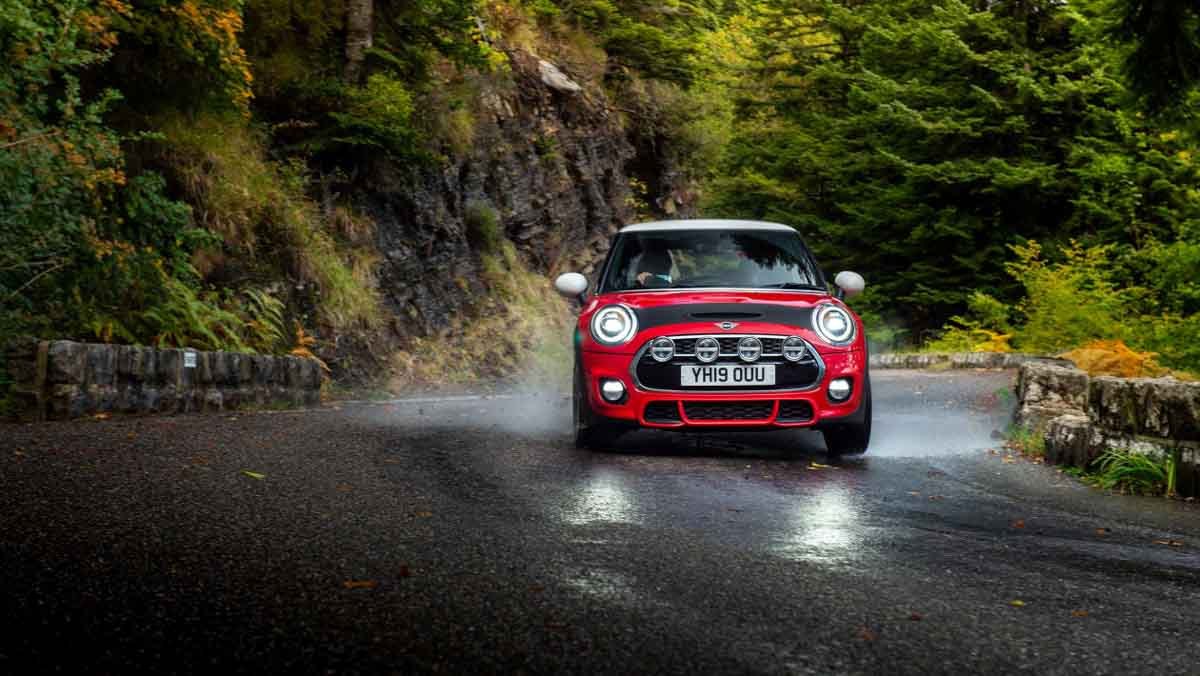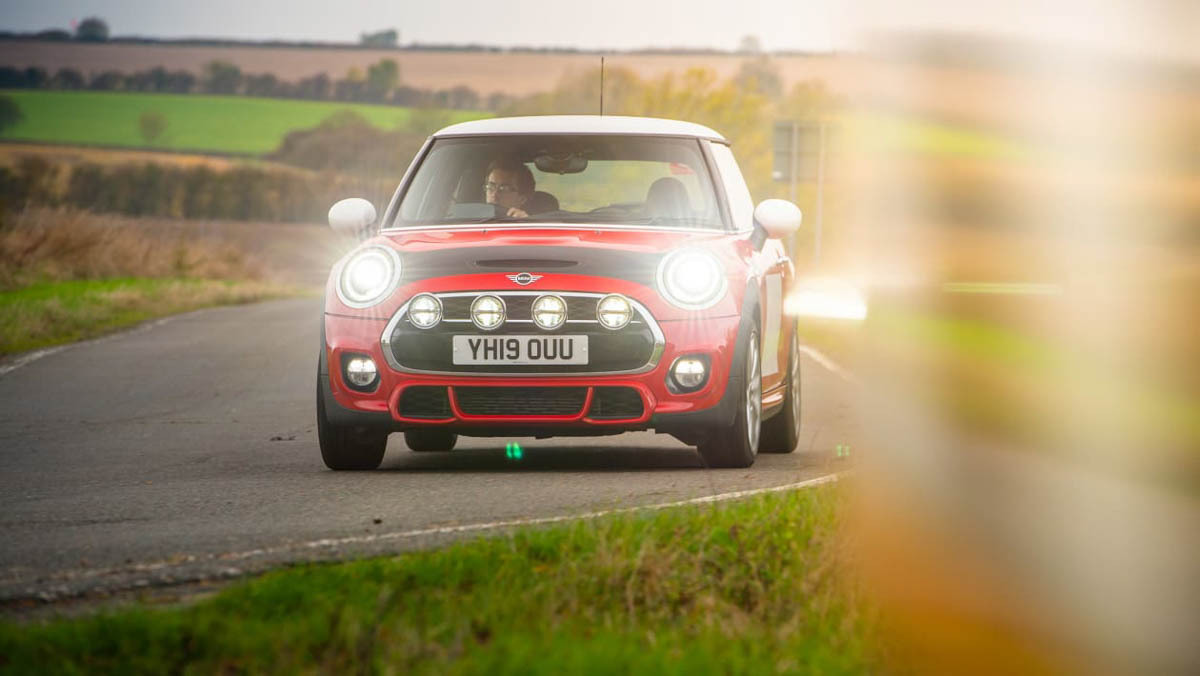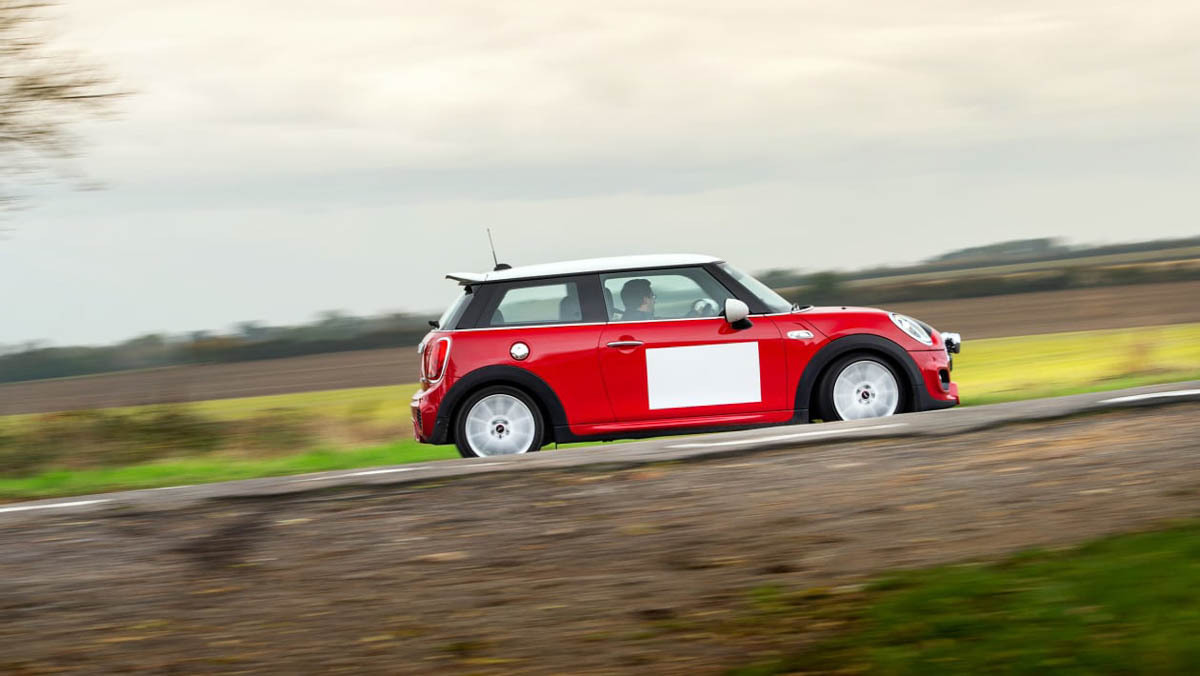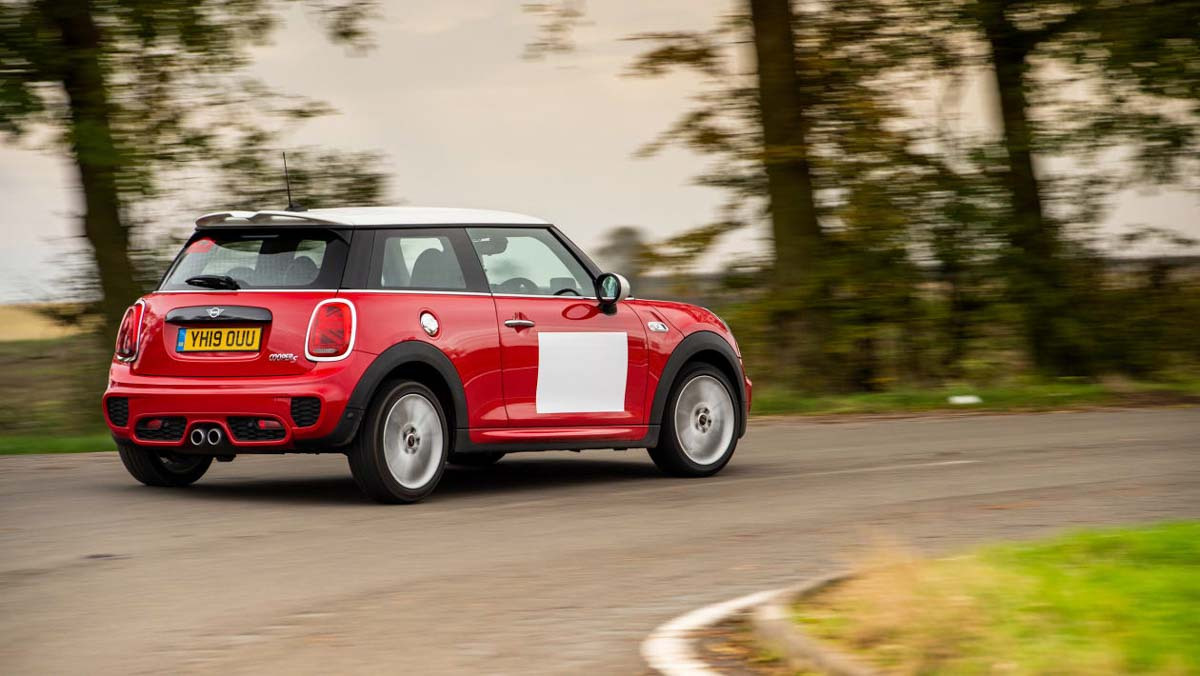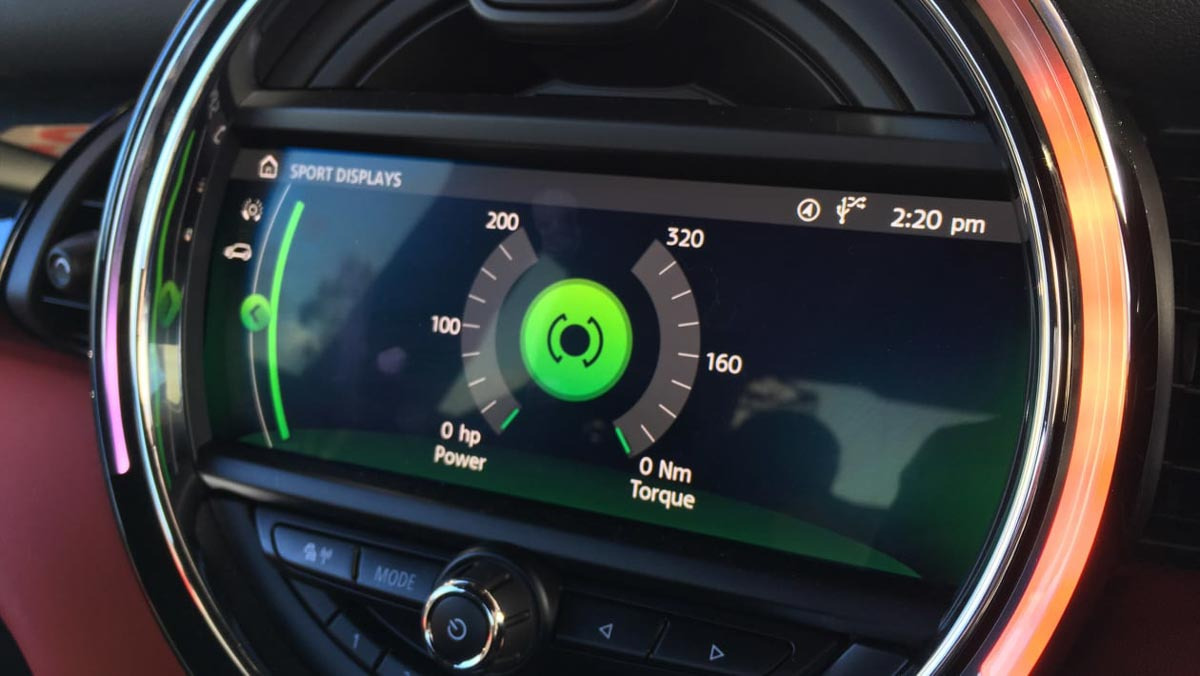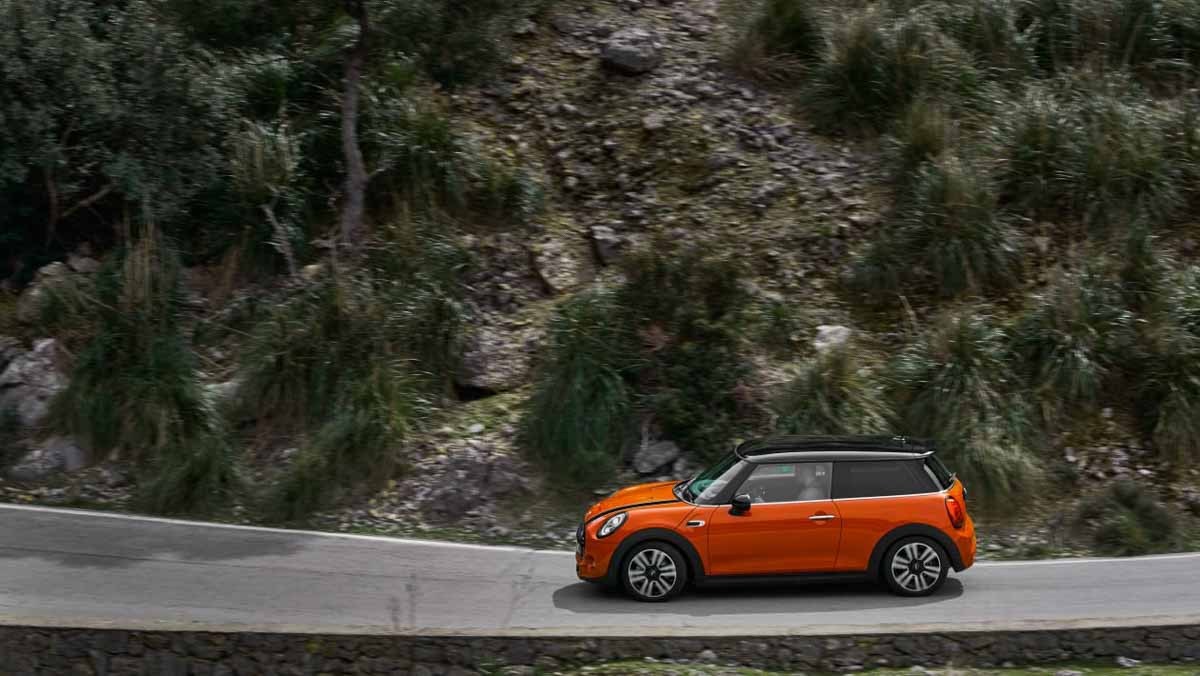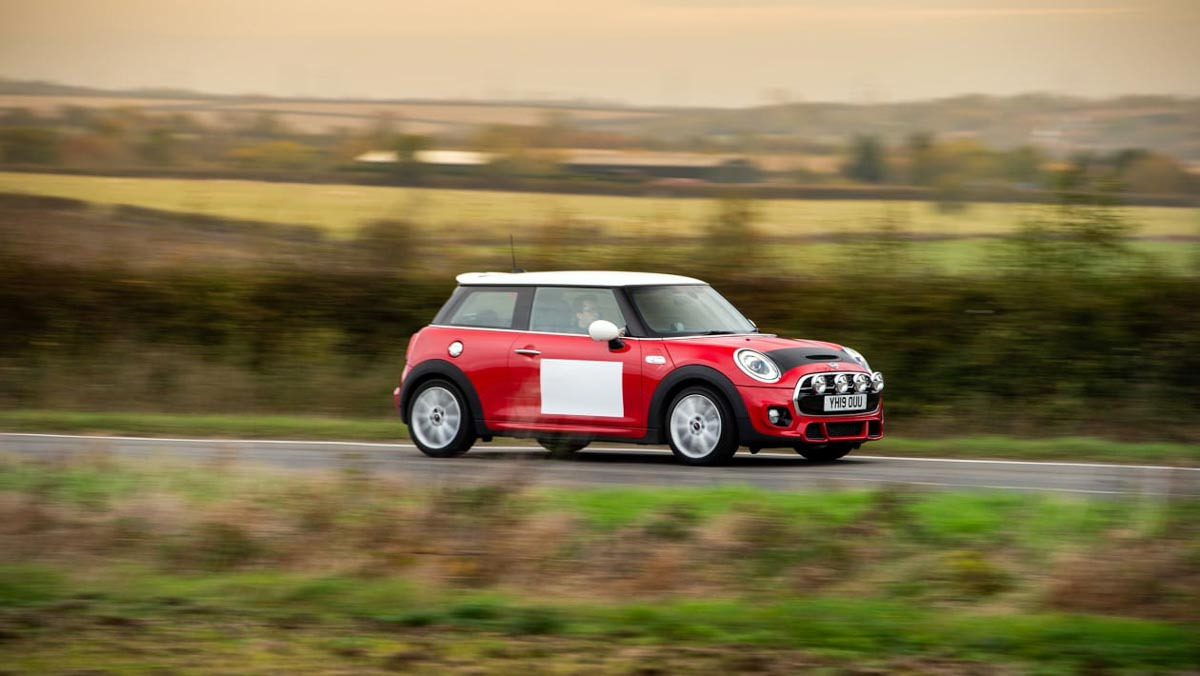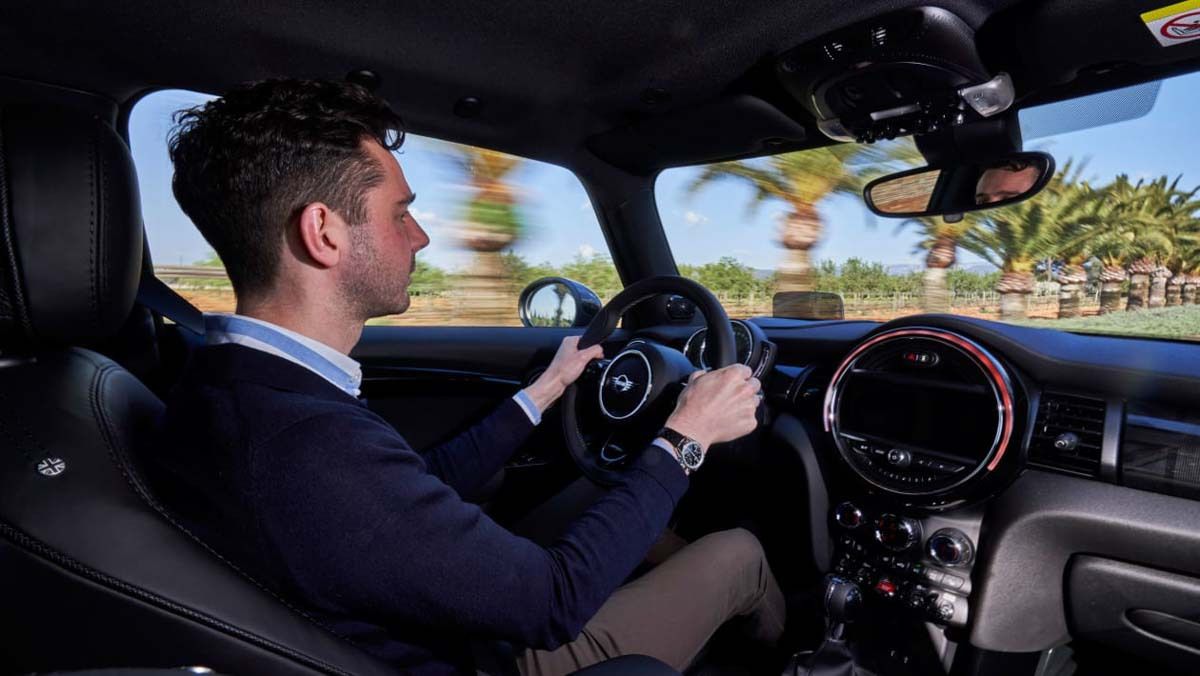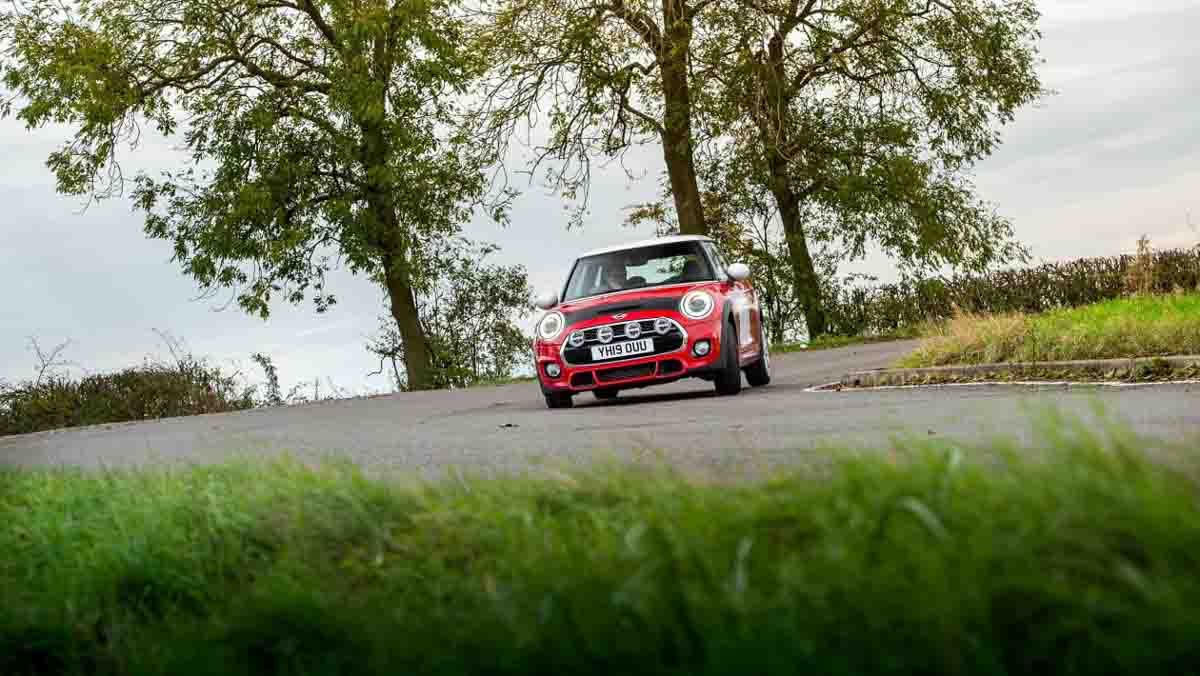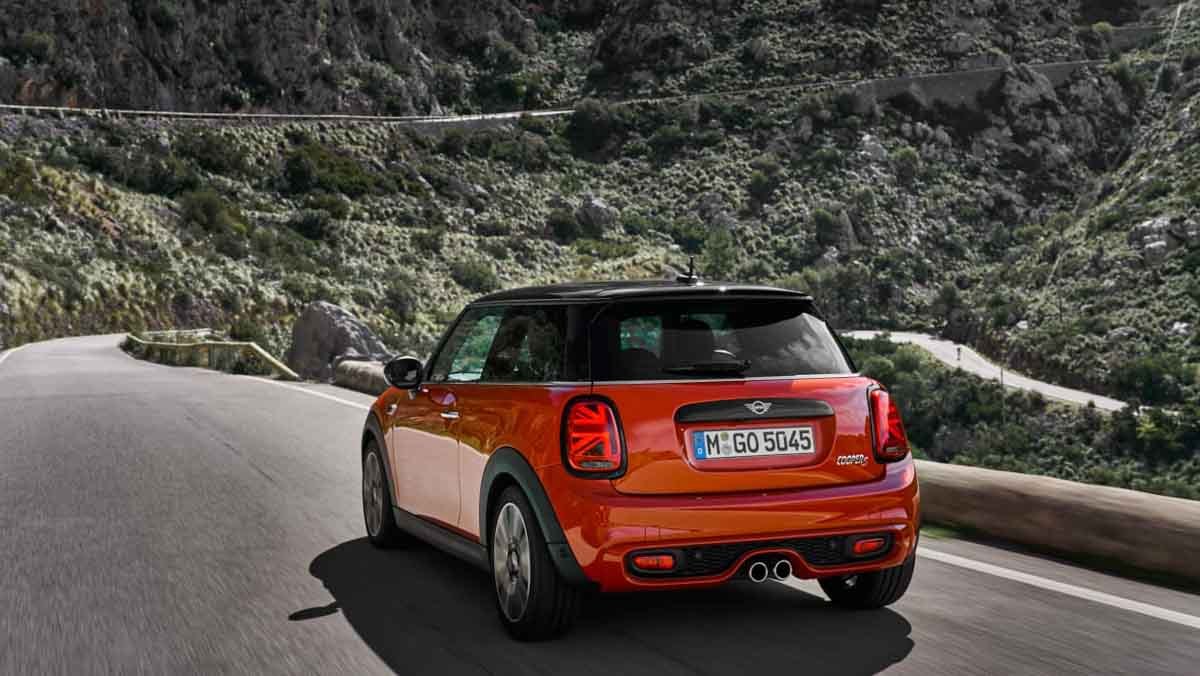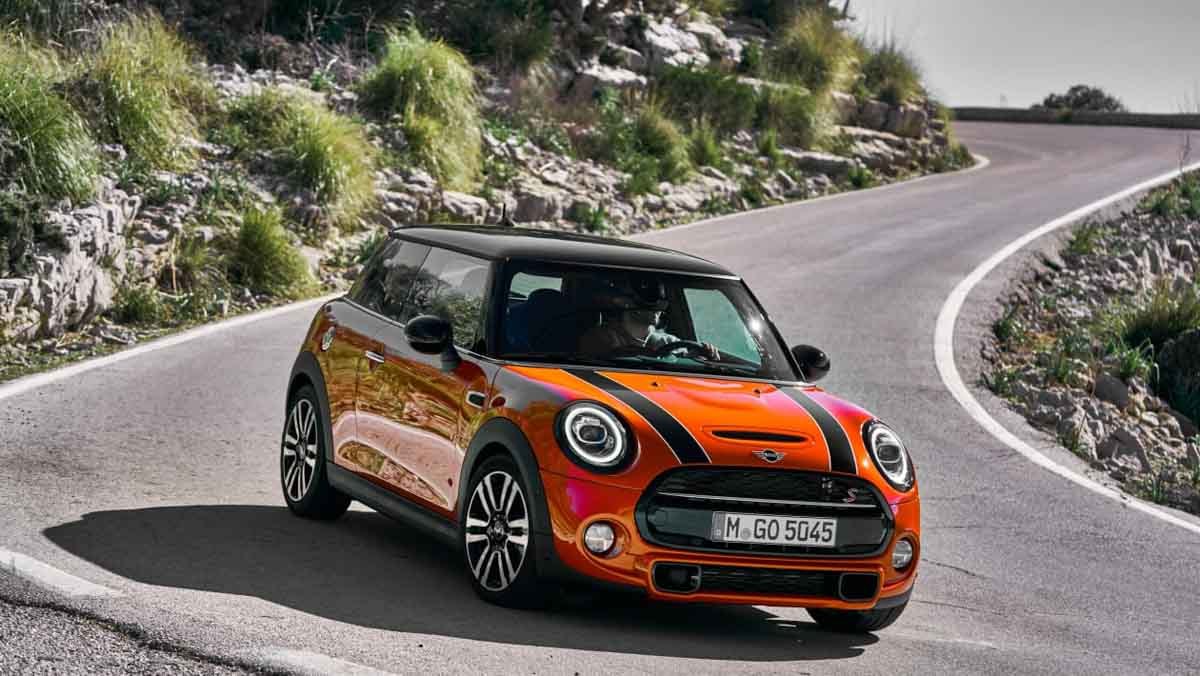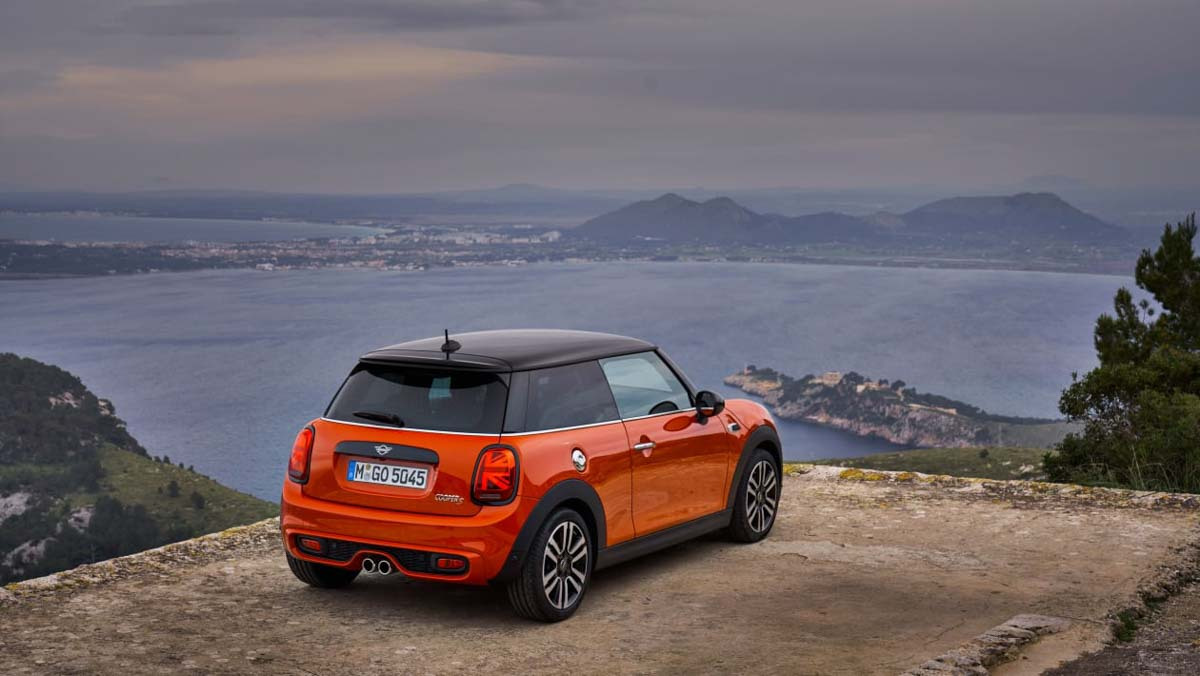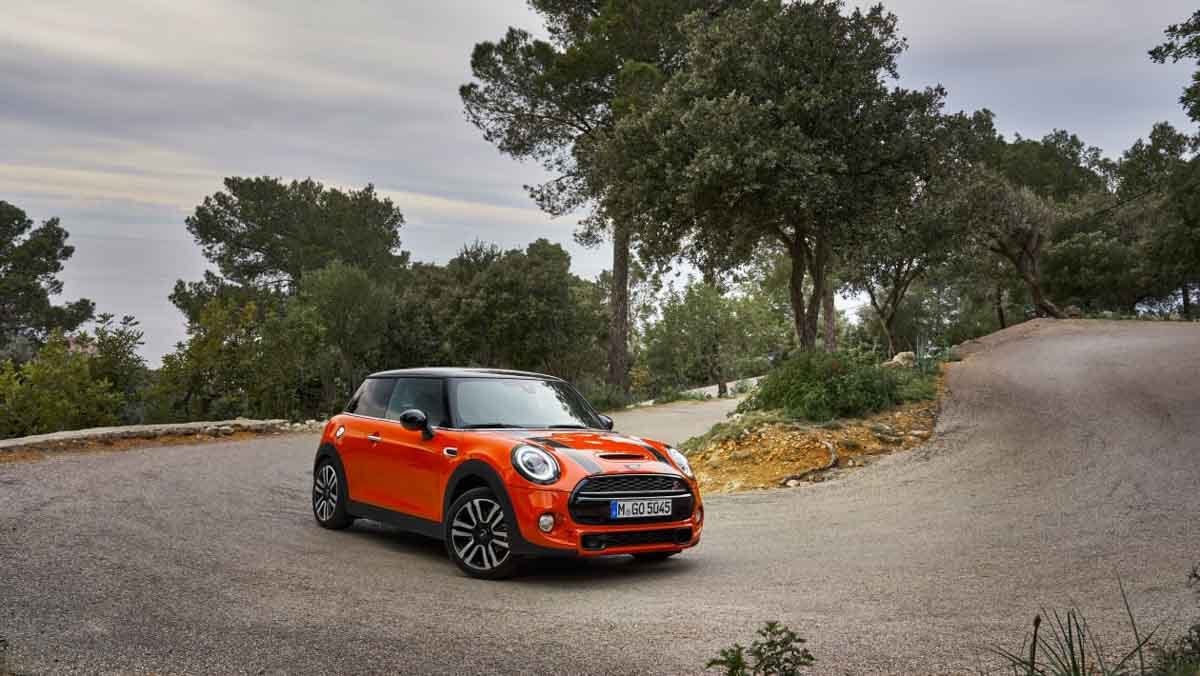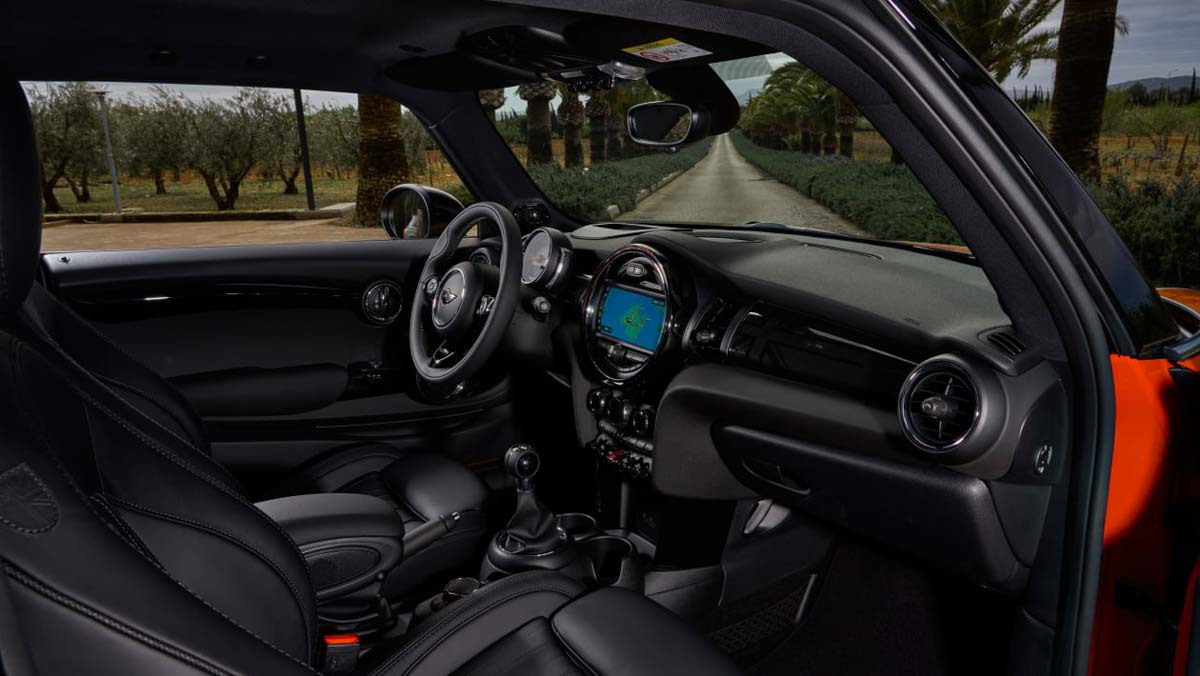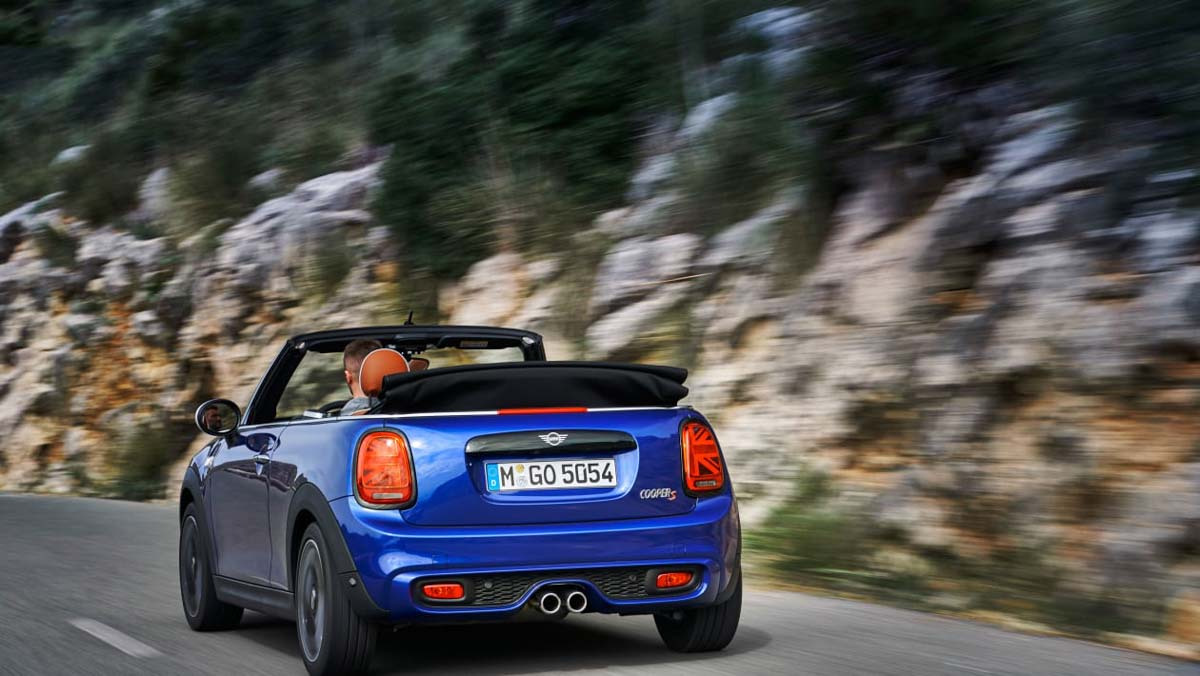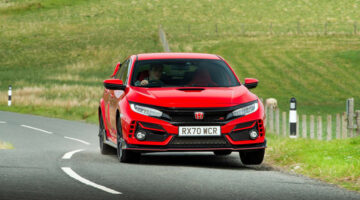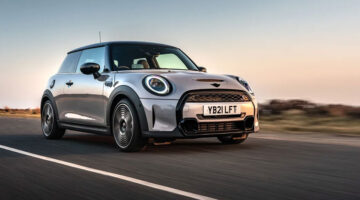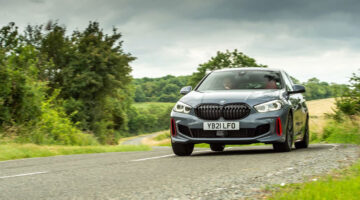Mini’s middle-ground hot hatch is fun, but keen drivers will get more from a Ford Fiesta ST
| Fun to throw around, well built, distinctive inside and out | |
| Not as focused as some, uninspiring engine, limited practicality |
Other hot hatchbacks come and go, but since BMW relaunched the Mini two decades ago, the retro hatch has been a constant fixture on the market. Only occasionally has it topped the table in group tests, but the Cooper S in particular has long been a fun, accessible and desirable hatchback with enough dynamic prowess to keep it relevant regardless of its aesthetic.
Now in its third generation and past its mid-life facelift, the current Cooper S is quite a different beast from those early, supercharged cars. The market too has moved on, with less competition these days, so the fact the Cooper S exists at all is worthy of celebration.
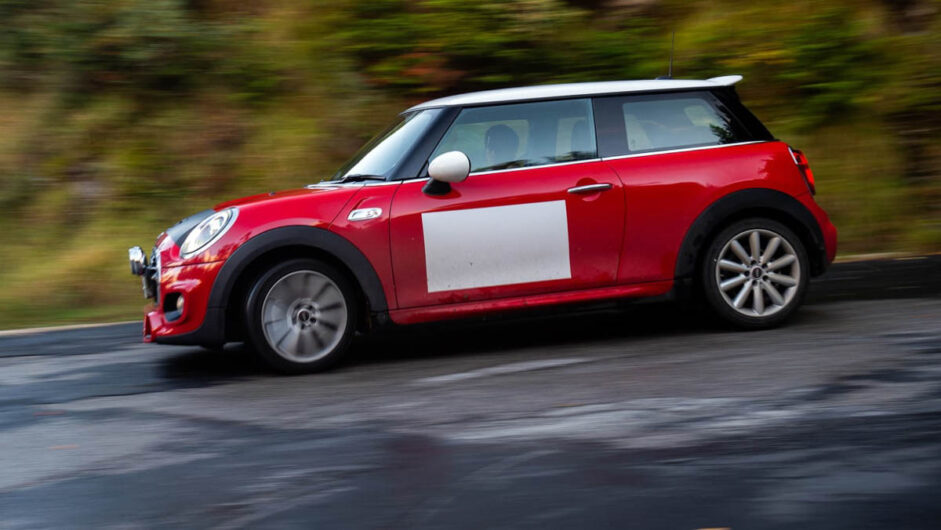
The current car might be large by Mini standards but it’s among the more compact superminis, while its retro styling hides technology, such as LED headlights and a comprehensive infotainment system, that make it feel surprisingly grown-up.
And naturally, there’s a good chassis too. Mini’s particular brand of tack-sharp steering and waspish agility are no longer unique these days, but they do mean the Mini DNA remains intact. We’d still take a Ford Fiesta ST for driving thrills, but to live with day to day, the Mini still has the edge.
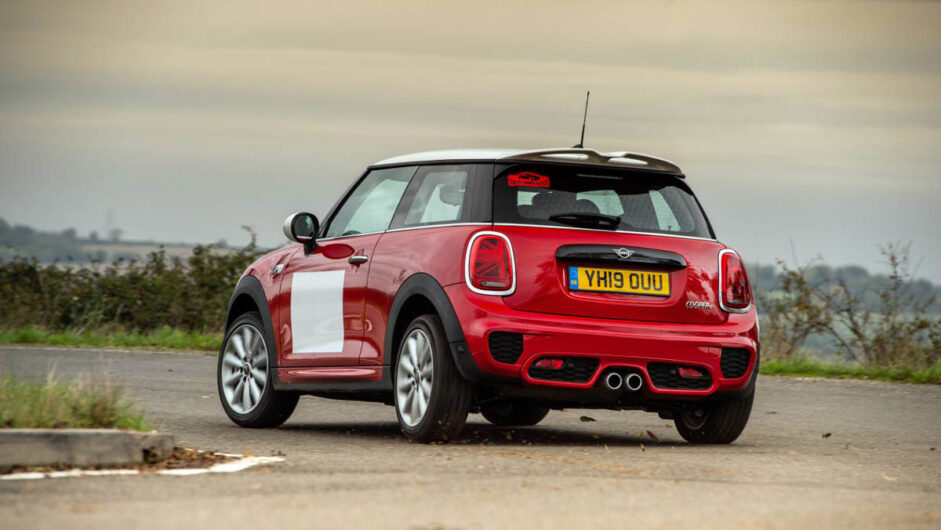
Prices, specs and rivals
A basic three-door Mini Cooper S in entry-level ‘Classic’ specification comes in at $29,647. Upgrading to ‘Sport’ trim bumps this to $32,079, and the more luxurious ‘Exclusive’ models are the same price as their Sport counterparts.
To this you can then add $1000 if you want an extra pair of doors, $4892 if you want the roof to fold back, and $1890for the dual-clutch auto transmission. This does make a car that initially seems like quite good value, quite expensive – a Cooper S Convertible in Sport trim with the auto transmission is a $38,327 car, and that kind of money starts to conflict with some of the more serious hot hatches from the class above.
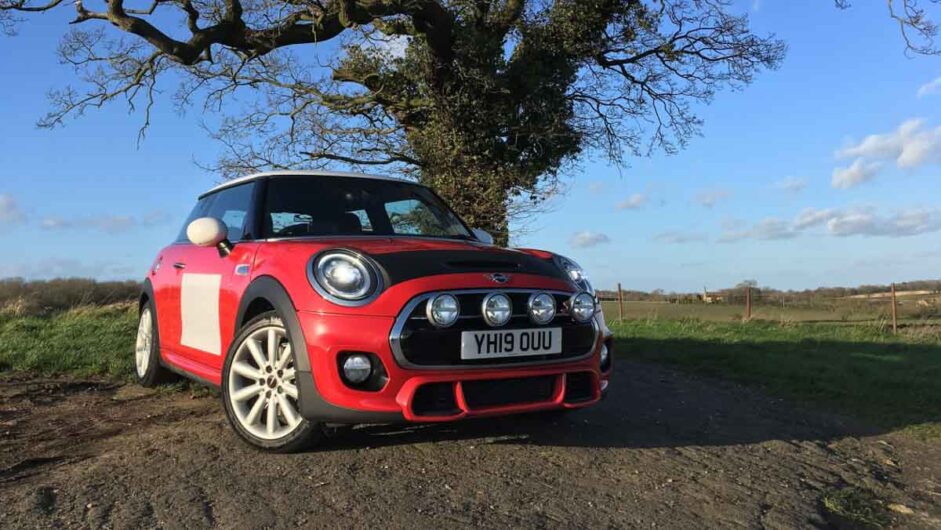
As far as comparably sized rivals go, the obvious alternative is a Ford Fiesta ST. It might only displace 1.5 litres and three cylinders, but with 197bhp on tap it’s more muscular than the Mini, and its slightly boosty power delivery and offbeat soundtrack make its power plant more exciting too. It’s also sharper on the road, though you have to spend $36,826 for the Performance Edition before you get a ride quality as well-tuned as the handling. Basic STs start at $27,096, though with desirable options most roll out of the showroom at something north of $32,000.
Next year will see the new Hyundai i20 N arrive on the scene, and while its performance will certainly be something to be reckoned with, it’s image (or lack thereof) will probably keep the two cars off the same shopping lists – same could be said of the rather excellent Toyota GR Yaris.
Beyond the Fiesta, true alternatives are thin on the ground. The Suzuki Swift Sport is similarly sized and similarly priced (though a current $2800 customer saving allows it to undercut the Mini at $23,975), and its lower weight offsets its lower output, but for most people it’ll struggle to touch the Mini’s image. The same goes for Abarth’s wide range of 595s and 695s, which are rowdy fun but less practical and less well-built than the Mini.
Engine, gearbox and technical specs
While 1.6-litre (and more recently 1.5-litre) engines have become the norm for hot hatch superminis, and indeed formed the basis of the last two generations of Cooper S, the current model instead uses a 2-litre unit.
Naturally, this is an economies of scale choice as much as it is to boost performance – the 2-litre, four-cylinder ‘B48’ power plant is used widely throughout the BMW empire in various states of tune, from this Mini through various 3-series and, amusingly, the four-cylinder variant of the Toyota Supra available in other markets.
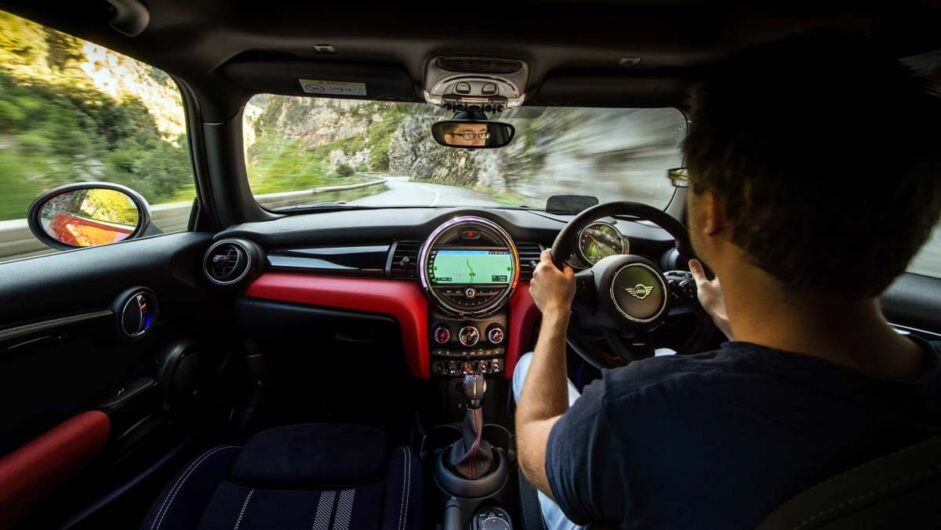
But it does mean extracting the S’s 189bhp output at 4700rpm is no great hardship when there are 302bhp variants floating around the group. Likewise, the larger unit is good for torque; 221lb ft of it, from a low 1250rpm, and while a 1205kg kerb weight is towards the upper end of this class, it’s not enough to hold the car back too badly.
Two transmissions are offered: a six-speed manual, and a seven-speed dual-clutch. Both drive the front wheels alone, and the latter naturally offers gearchange paddles behind the steering wheel. The behaviour of the engine, and in the auto’s case, the engine and transmission, is adjusted depending on the driving mode selected – the Cooper S has Green, Mid, and Sport options, with a corresponding change in throttle response and gearshift behaviour.
Performance and 0-100 time
Modest the Cooper S’s 189bhp may be, but a sub-seven to 100kph – 6.8 for the three-door, 6.9sec for the five-door – is nothing to be sniffed at. Nor is a 235kph top speed; remember when only very high-performance cars used to knock on the door of 241kph?
On paper the Mini might look brisk, but its on-road performance doesn’t feel quite as spicy as you’d maybe expect of a 2-litre supermini. Part of that is a particularly linear power delivery that, once boost starts to build beyond 1500rpm, seems to provide the same rate of acceleration all the way to the red line. And since the engine never feels particularly happy butting the limiter, you end up driving somewhere in the mid-range.
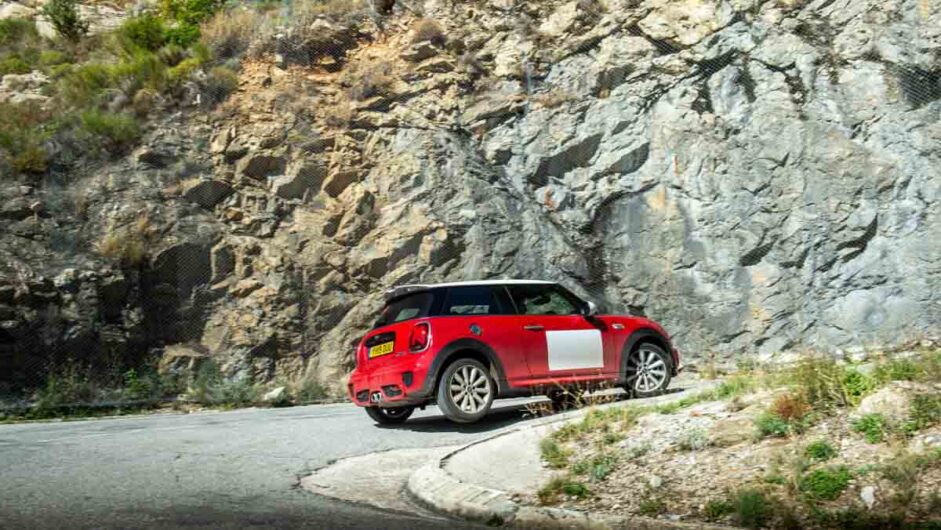
It’s definitely a quick car, and the healthy mid-range makes for easy overtaking performance. It’s at its best operated with the standard six-speed manual gearbox too, where a reasonably satisfying, notchy gearshift can be stirred around for a suitable ratio. The pedals are well arranged for heel-and-toe when you’re coming back down the ’box too, and in Sport mode there’s an auto-blip function to make things a little easier. The auto ’box isn’t quite as satisfying.
Just as the engine’s not at its most enthusiastic towards the red line, nor is it a particularly great engine to listen to. There’s a hint of induction honk at certain revs, and some exhaust noise just about filters through, but it’s all a little synthetic.
Slowing down again can be good fun though – not everyone gets brake pedal feel right, but Mini is a company that does. The pedal is firm underfoot and the stoppers have good power and minimal fade.
Ride and handling
Minis have long been towards the top of the class for agility and fun. That remains unchanged with the current model, though it’s not without fault. That it remains one of the more entertaining hot hatches in this class on a twisty road is as much to do with the current paucity of rivals as it is the car’s inherent talents.
Things the Mini does well include steering response, agility, body control and a general sense of being ‘up for it’ – it’s the kind of car that, if it were to serve as your first taste of a hot hatch, would probably snare you as a hot hatch buyer for life.
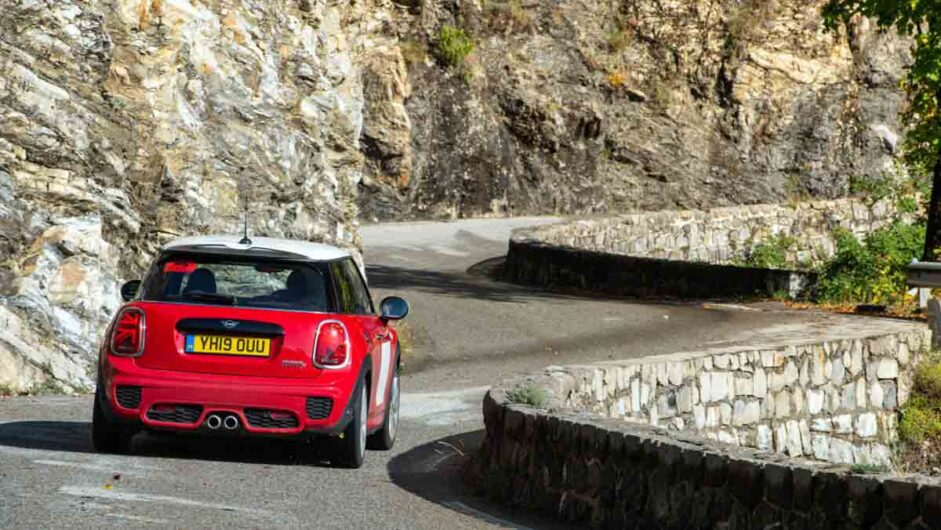
It’s fun to drive at a brisk pace, feeling responsive and engaging and offering enough performance to punch hard out of corners, and good balance that offers some rotation without feeling edgy. With a compact body and good visibility it also feels at home on Britain’s B-roads in a way some larger hatches do not.
What it lacks is the same sense of focus that you get in something such as a Ford Fiesta ST, which feels perhaps less accessible initially but has a higher level of ability to match your own confidence and ability. We know the chassis is capable if given the right parts – the limited-run Mini Challenge demonstrated that – but as standard, a Cooper S doesn’t go as far as some. And while the steering is quick, it’s almost cynically darty, while it’s also a little short on off-centre feedback.
On the plus side, it’s among the more mature hatches, so ride and refinement are pretty good. The ride can feel a little bouncy over some surfaces, but in general it isolates you from the road surface and has enough control not to feel out of its depth on more challenging roads.
L/100km and running costs
Making a car small and light tends to pay dividends at the pumps, and that’s certainly the case for the Cooper S. On paper a 6.5 L/100km combined figure (or 6.6 L/100km for the five-door) doesn’t sound too impressive in a world of hybrids and EVs, but those numbers are actually well within the reach of mere human beings out in the real world too.
That’s despite the car using a 2-litre engine rather than the 1.5 or 1.6 standard to the class, but it’s a good example of what Mazda would call ‘rightsizing’ – the 2-litre four-cylinder doesn’t have to work very hard to get the Mini body moving, and if you’re not using all the revs, all the time, this results in good real-world economy.
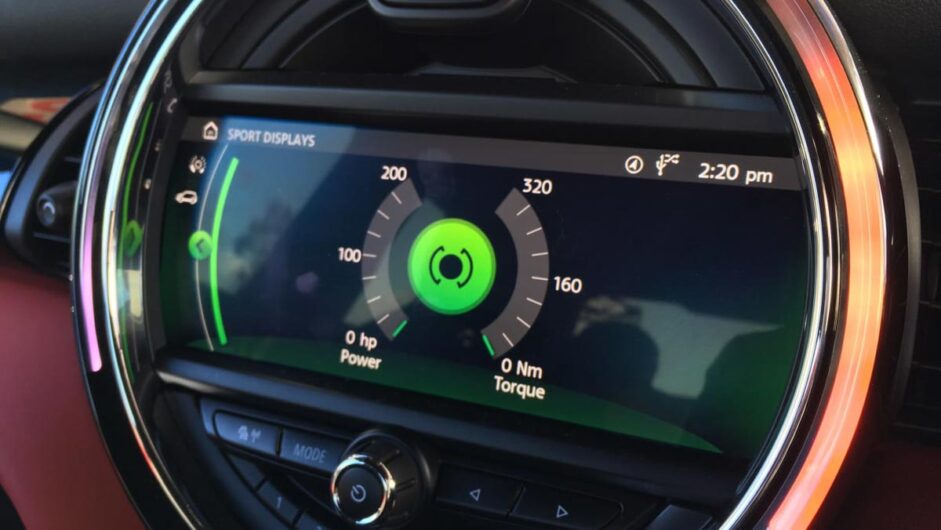
In our experience, the Mini’s low-40s economy means a real-world range between fills of around 650 kilometers, so visits to the pumps are relatively rare. A CO2 figure of 139g/km is starting to look out of step in this day and age though, meaning a first-year bill of $300 and $200 a year thereafter.
Tyres shouldn’t be a great expense. Our long-term Cooper S wore 205/45 R17 Michelin Primacys (yup, the same eco-biased tyres worn by the Toyota GT86), a set of which costs around $610 from Blackcircles – if your first set ever wears out. The thing is, 2017’s evo tyre test winner, the Michelin Pilot Sport 4, is only ten pounds more per corner in the same size, so perhaps see that first tyre change as a chance to fit more accomplished rubber…
Interior and tech
With three- and five-door bodystyles and a convertible available in the standard Mini hatchback range – something not many rivals now offer – you get to choose your balance between practicality and looks. Squeezing people into the back of the three-door can be tricky, a job the five-door makes easier, and thanks to the latter’s longer body there’s also a proportional increase in room.
Both get the same dashboard design though, the latest evolution of the pseudo-retro arrangement that began in 2001 with the first BMW Mini and its large central speedometer – itself a parody of classic Minis. That layout doesn’t make as much sense these days, as Mini now squeezes a square peg into a round hole – the infotainment display now resides where that speedo used to.
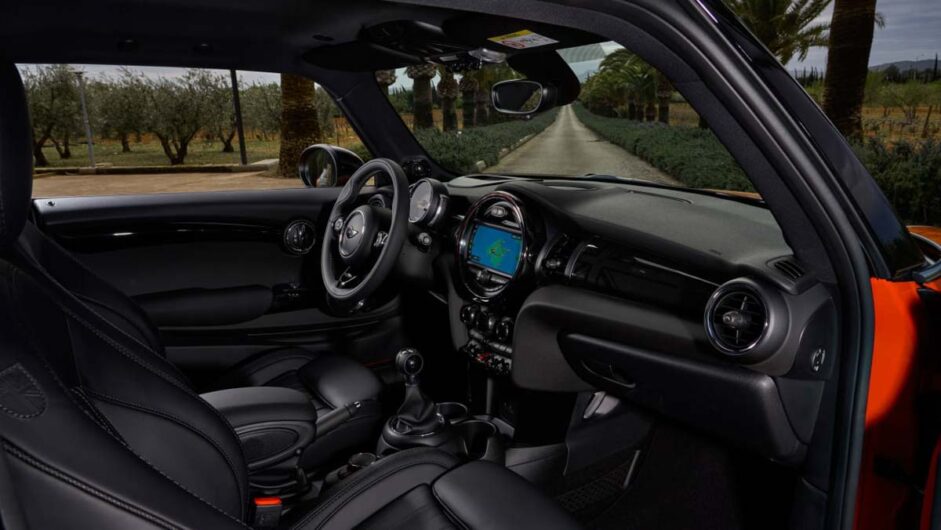
There’s plenty of modern tech though for a car with so many retro touches. Mini’s version of BMW’s iDrive controller works equally well these days and can be largely navigated without staring too long at the screen. A head-up display is available, and you get other touches such as auto-dimming mirrors, auto wipers, mood lighting… old school it might look, but the new bits are generally pretty good.
The driving position can feel a little high at first, but you quickly get used to it and in general the Mini is a great car to run day-to-day. It’s comfortable, relatively smooth and quiet, and solidly constructed. Storage space isn’t a strong point though – the boot is small, and interior cubby holes either mean or poorly shaped.
Design
Well, it’s a Mini, isn’t it? The proportions and details might have twisted and inflated over the years but you could never mistake the Cooper S for anything else, particularly if you tick the right boxes for colours and options for the suitable rally replica or 1960s touring car look.
You don’t have to go quite so far as we have with our long-term S, with its number squares, number plate band across the bonnet and quartet of spotlights – the dealership will only fit two of those, ordinarily – but the Mini visual options list is vast, so claims that no two cars are ever the same does have some basis in reality.
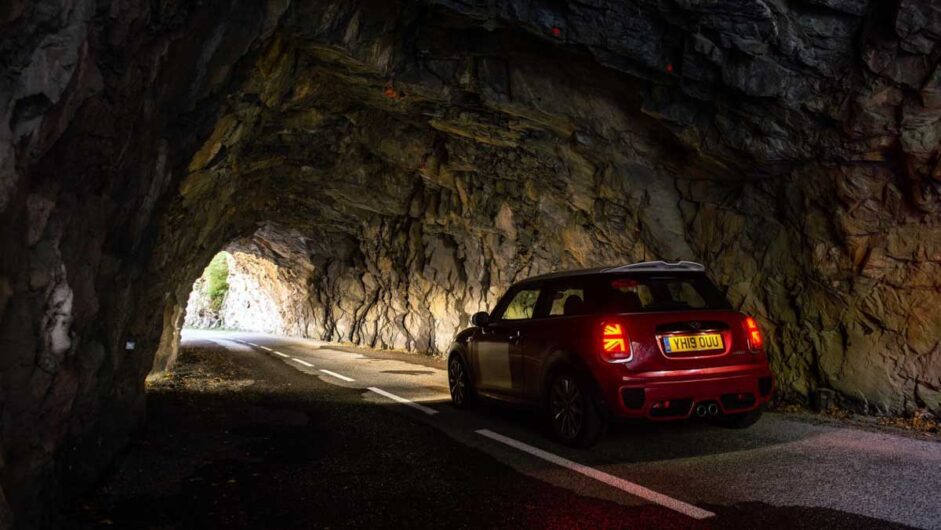
More generally, Minis are looking a little bulbous these days, the five-door is quite ungainly, and it’s slightly cheeky that Mini still puts a vent in the bonnet as it did with the original supercharged cars – the current turbocharged models don’t need it, and the vent is closed off. The available Union Jack tail lights are an acquired taste too, perhaps leaning too heavily on the swingin’ ’60s/Britpop vibe for a company that’s been owned by BMW since the 1990s.
More positively, the unique shape does have some benefits beyond its retro appeal. The upright windscreen and level window line is far better for visibility than most rivals, and the car is still relatively compact which makes manoeuvring and parking a doddle – not to mention squeezing down mountain roads.
This article originally appeared at evo.co.uk
Copyright © evo UK, Dennis Publishing

